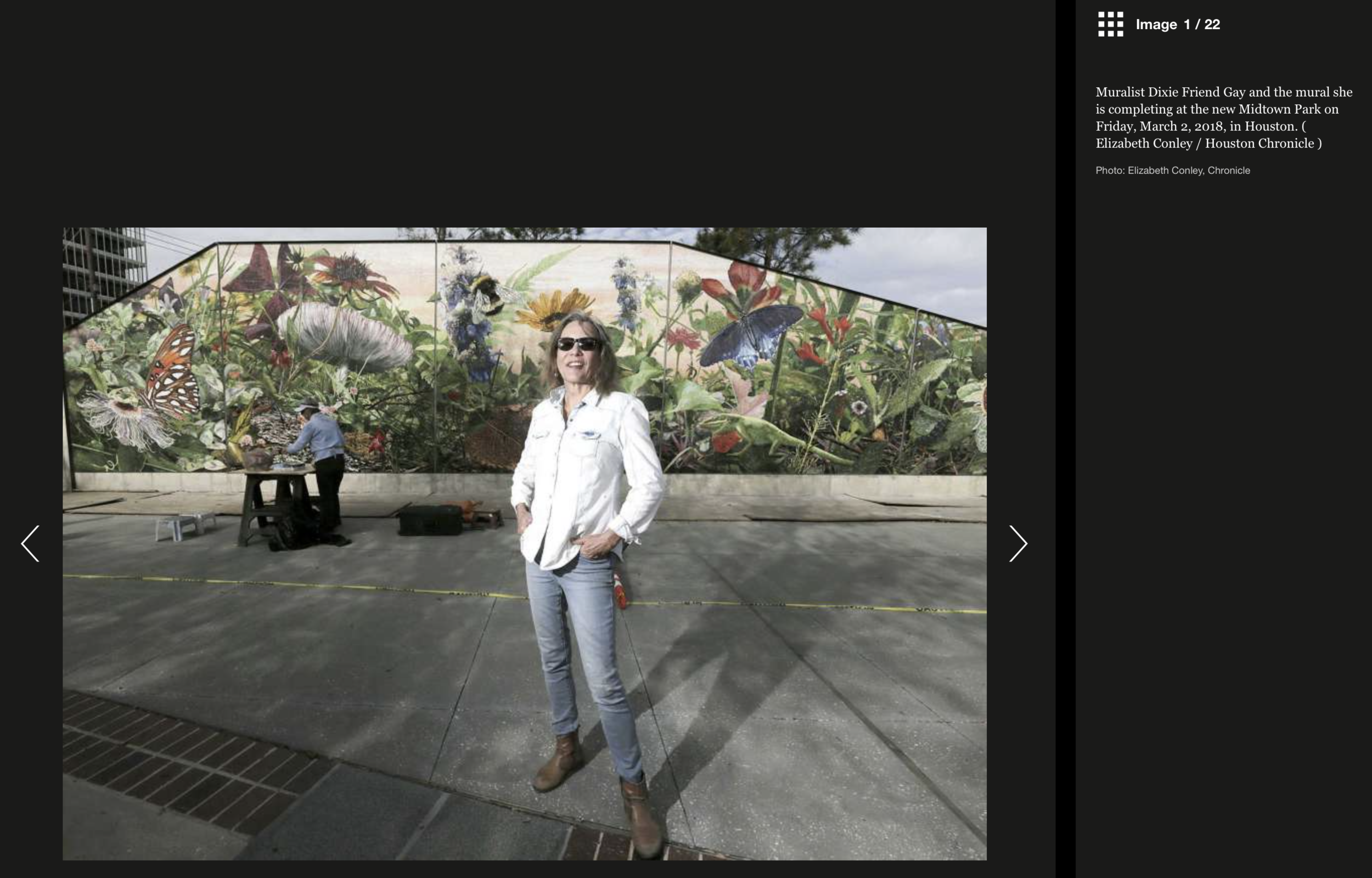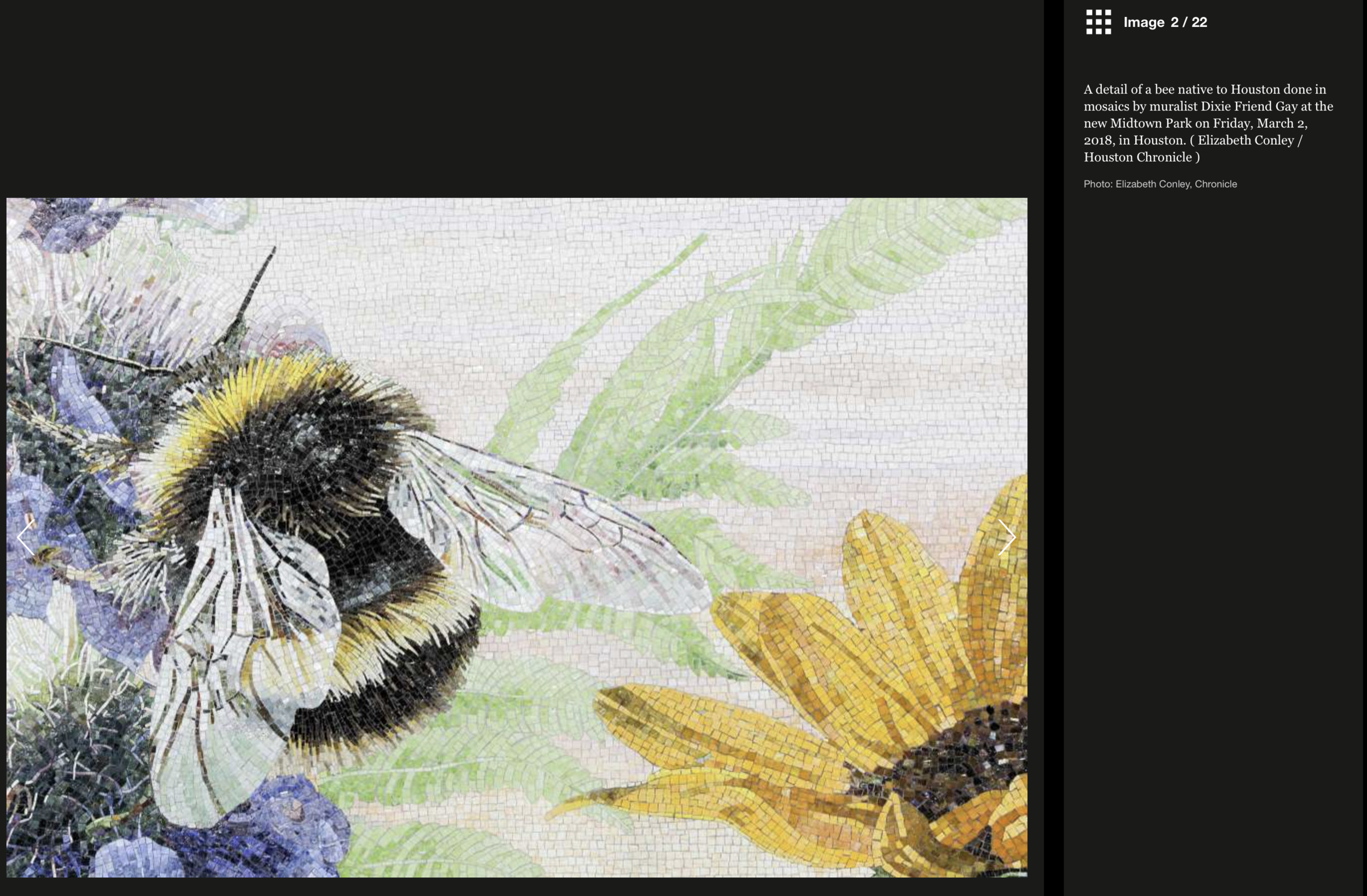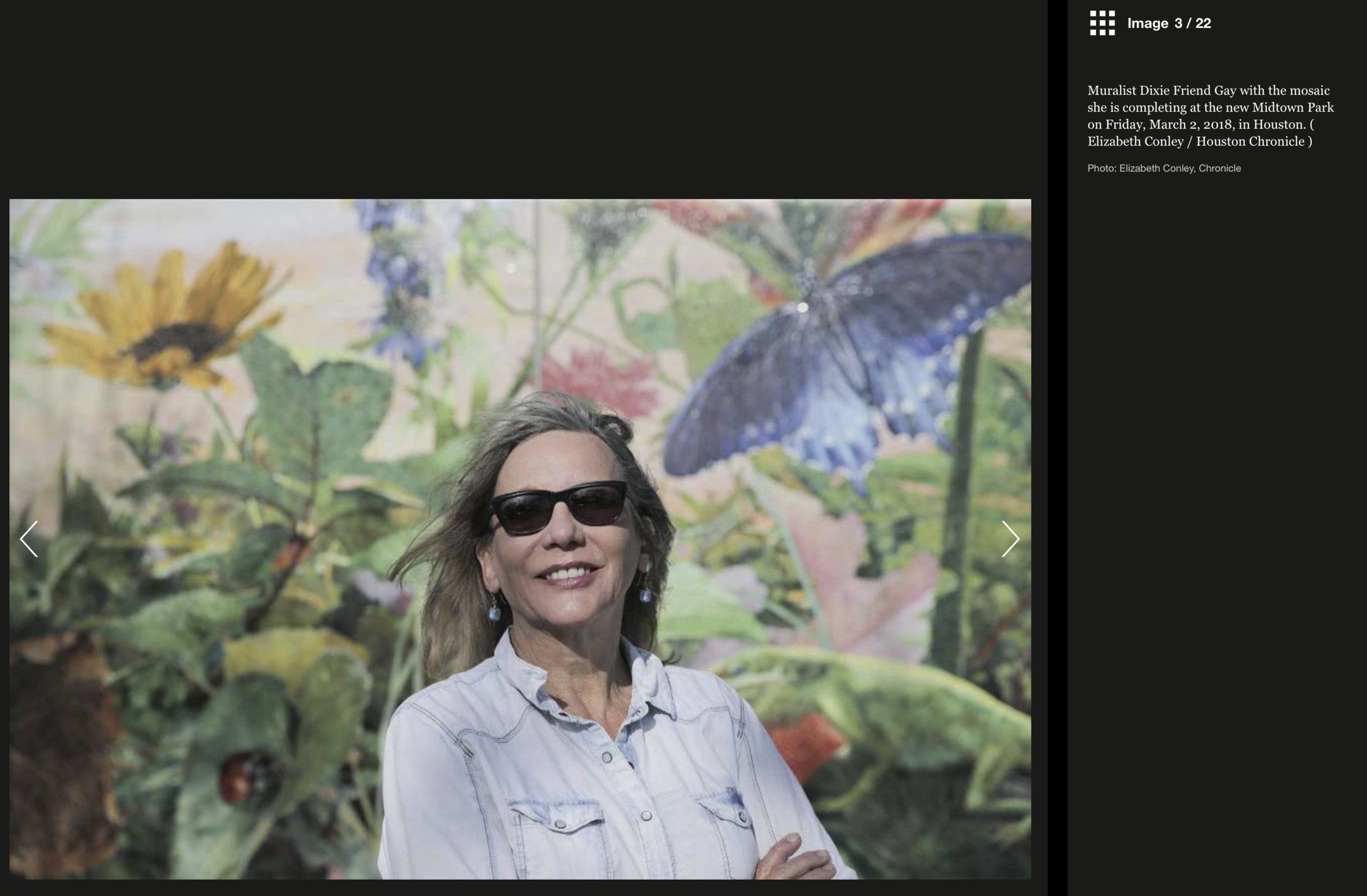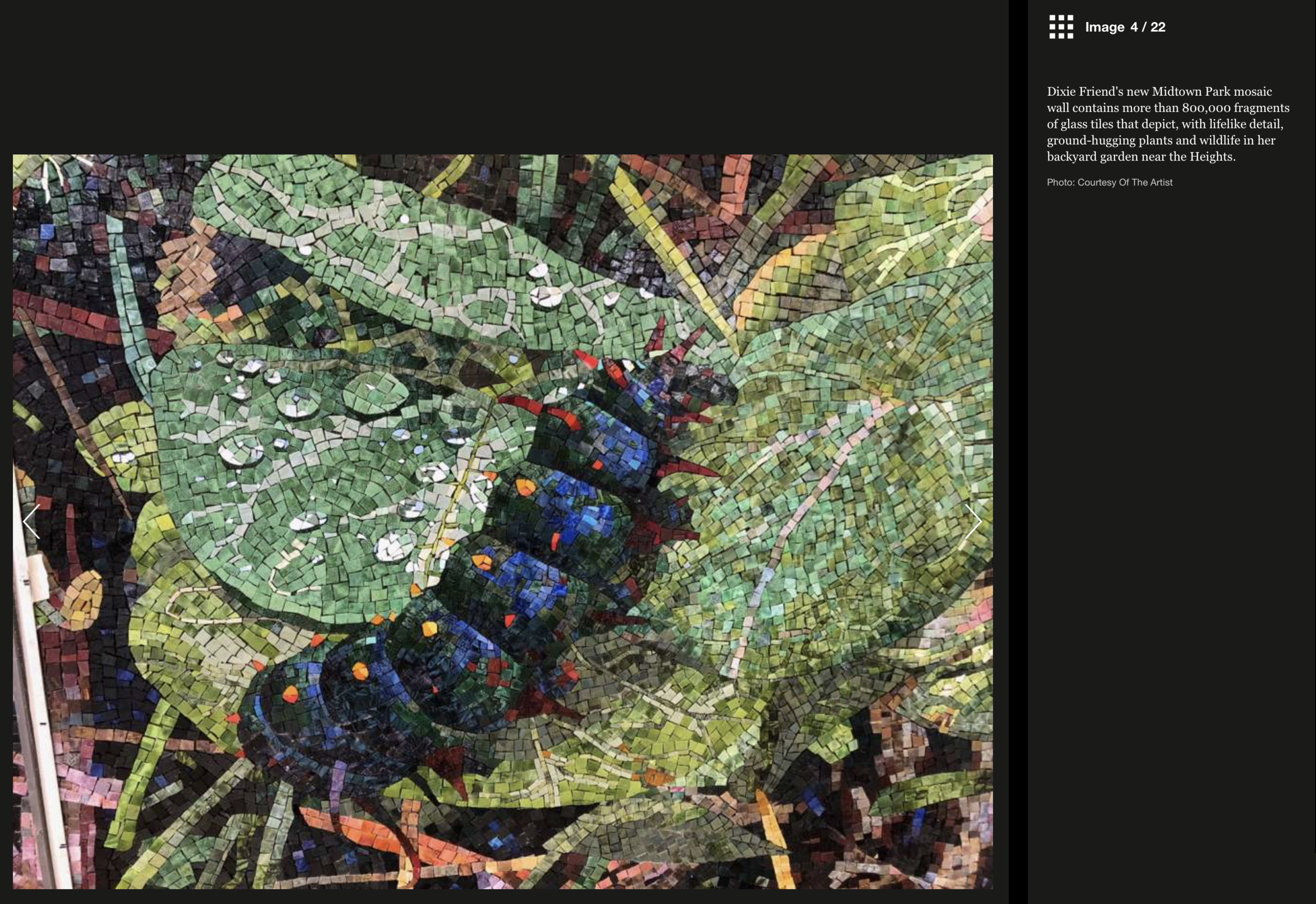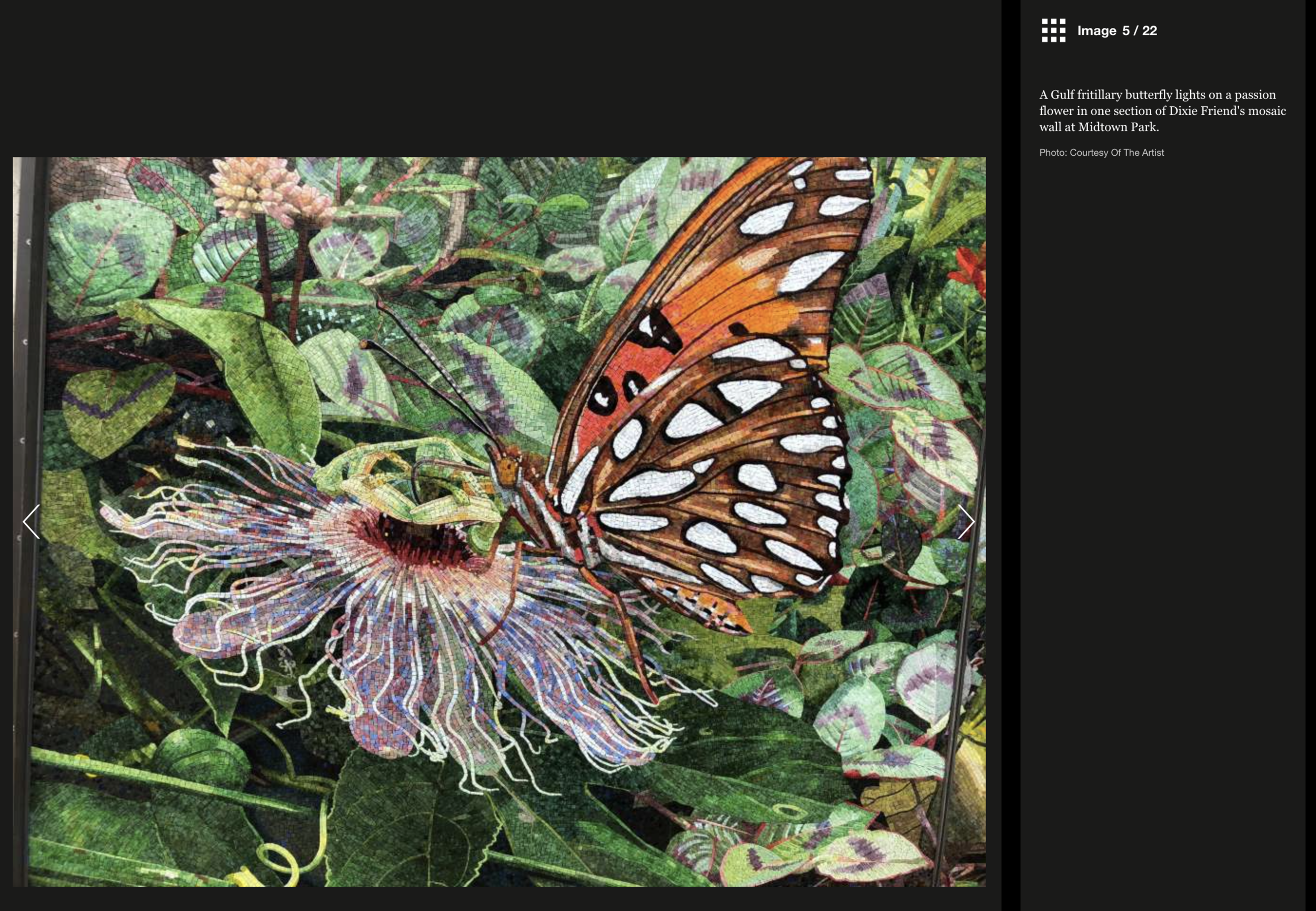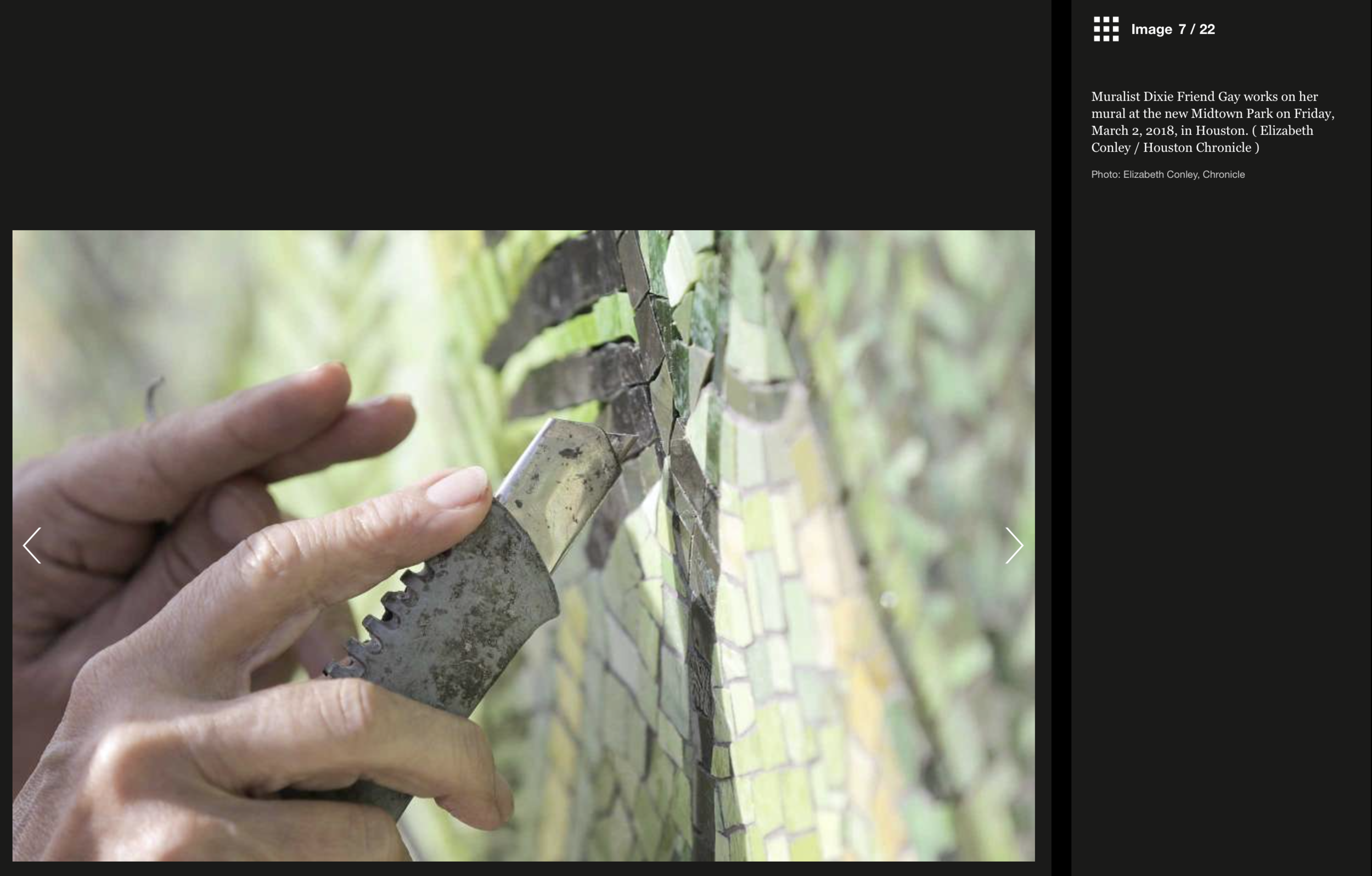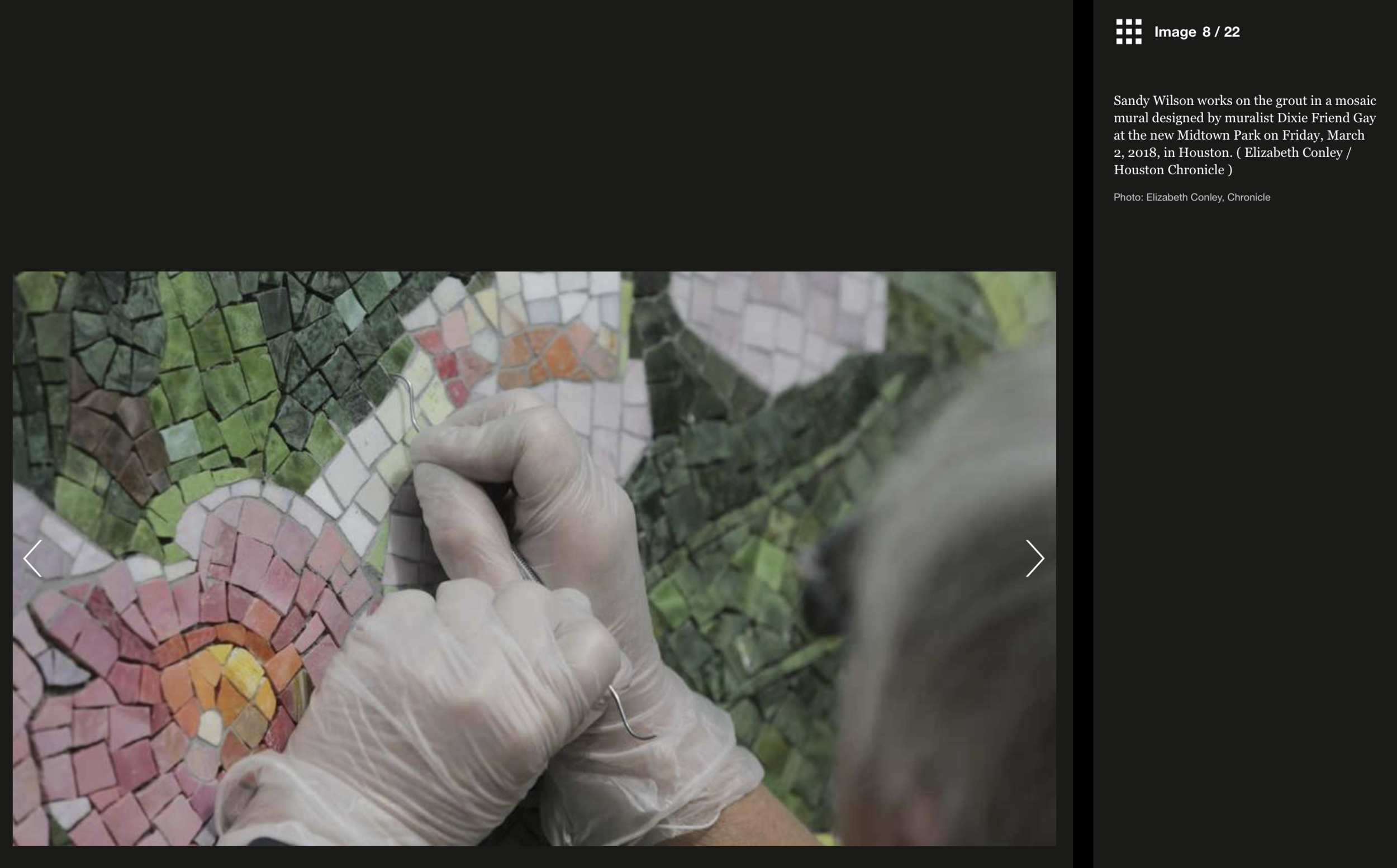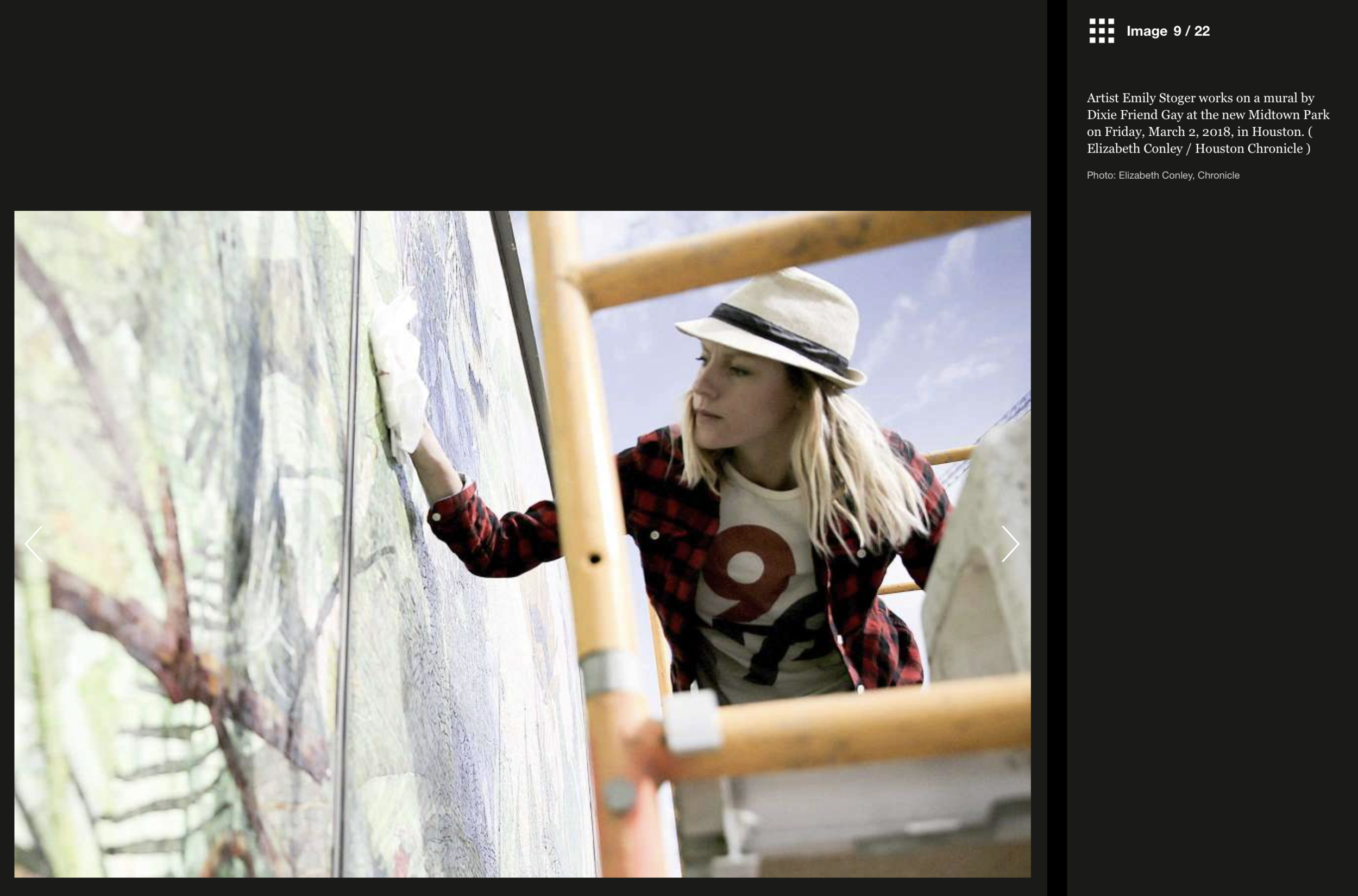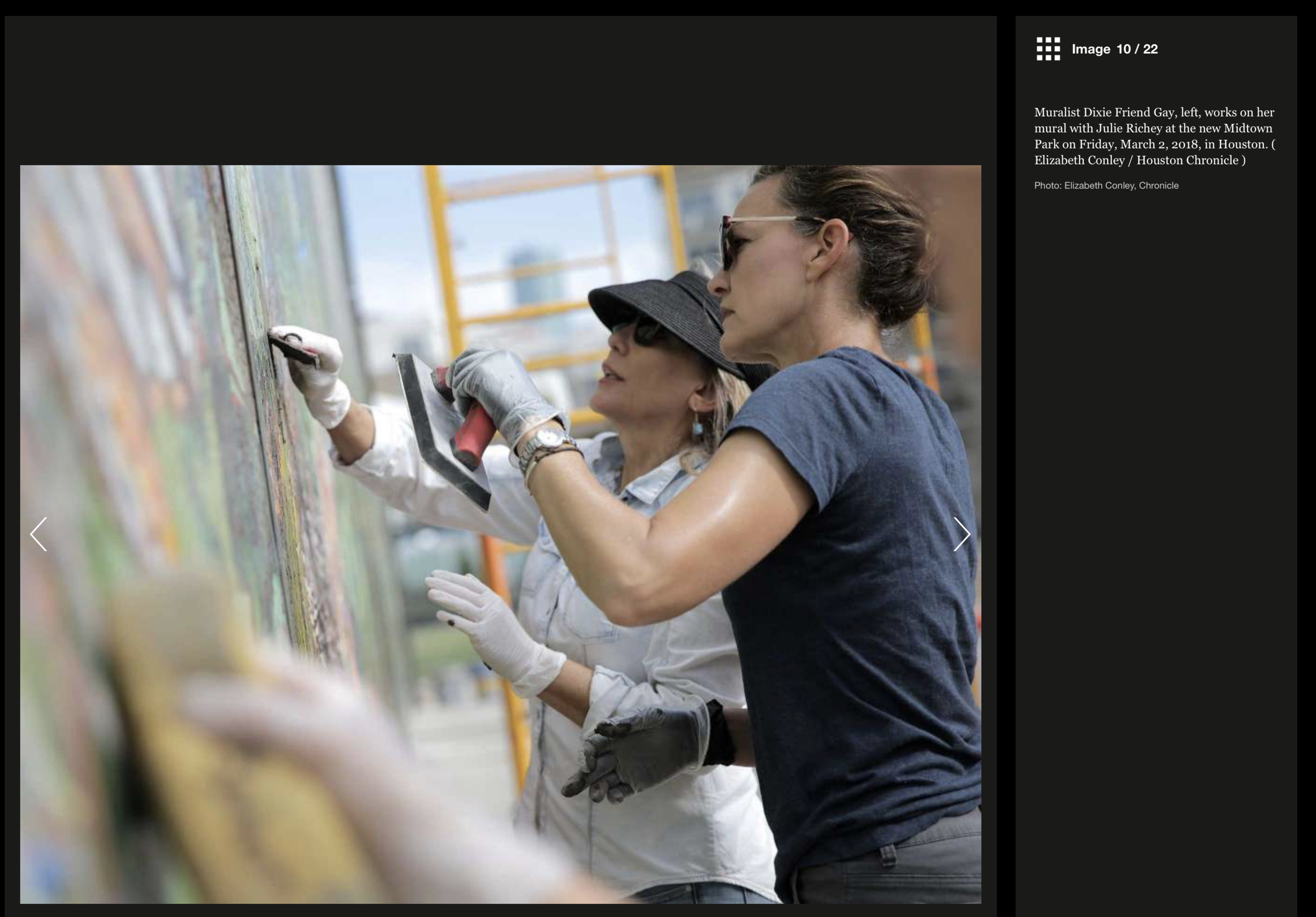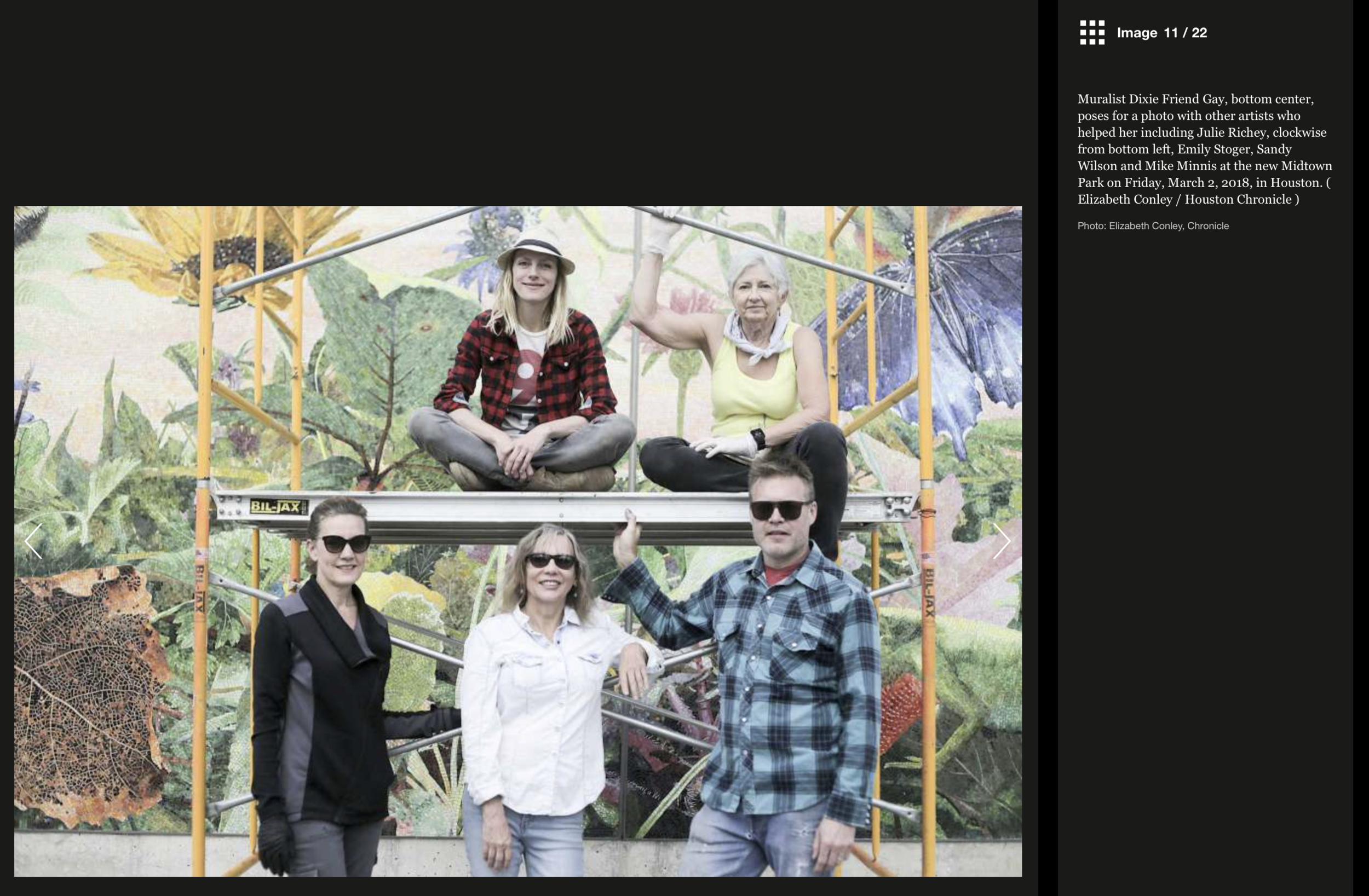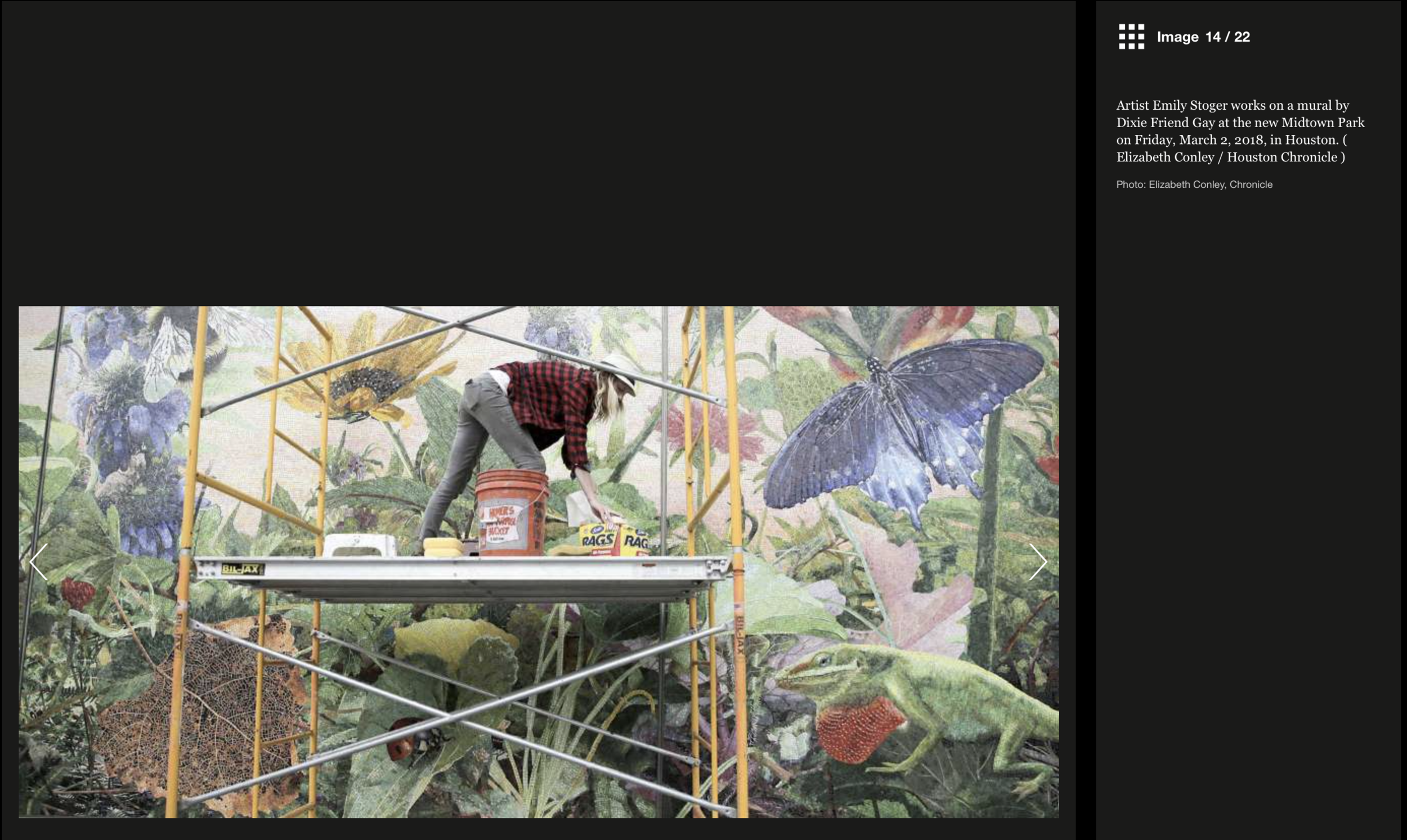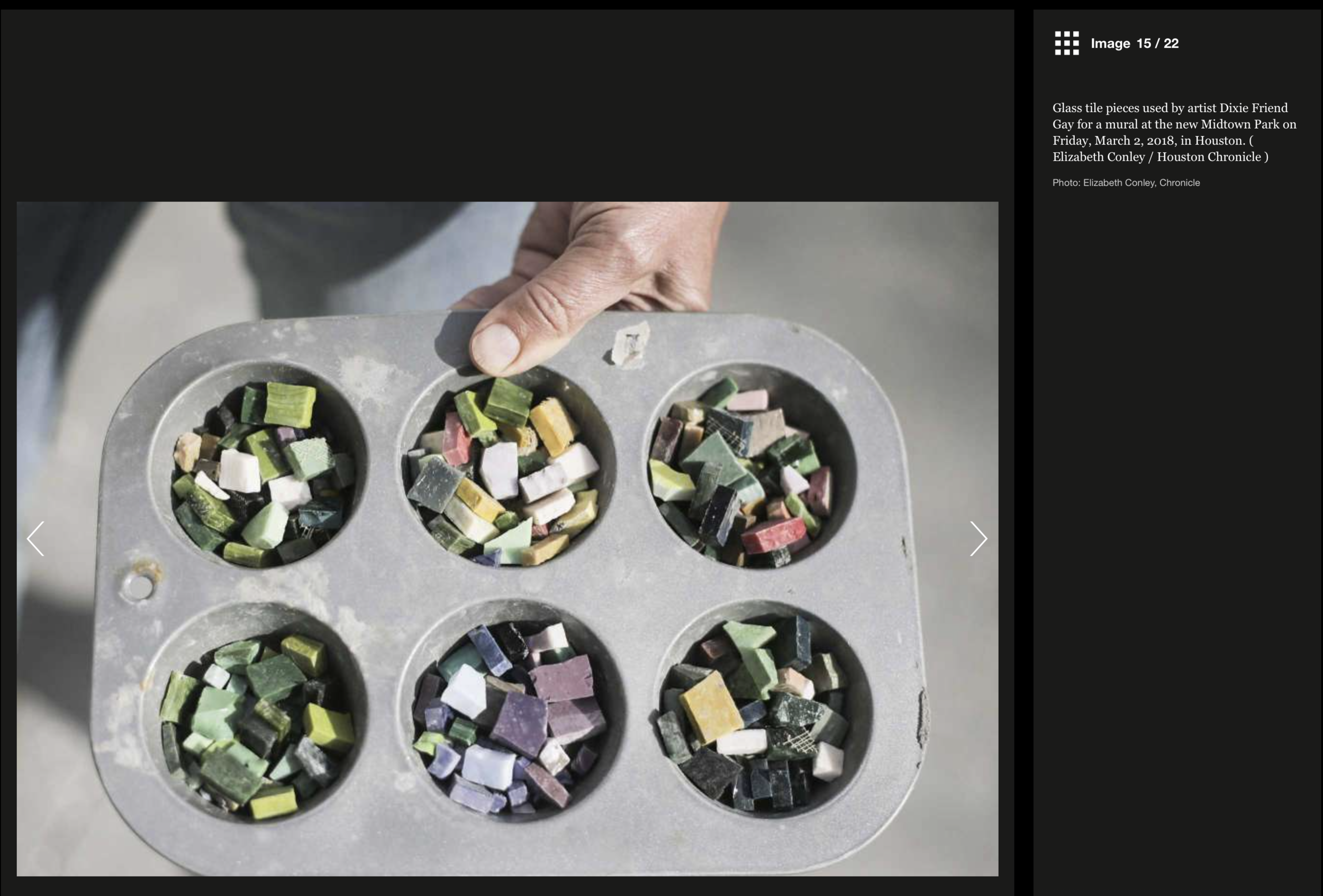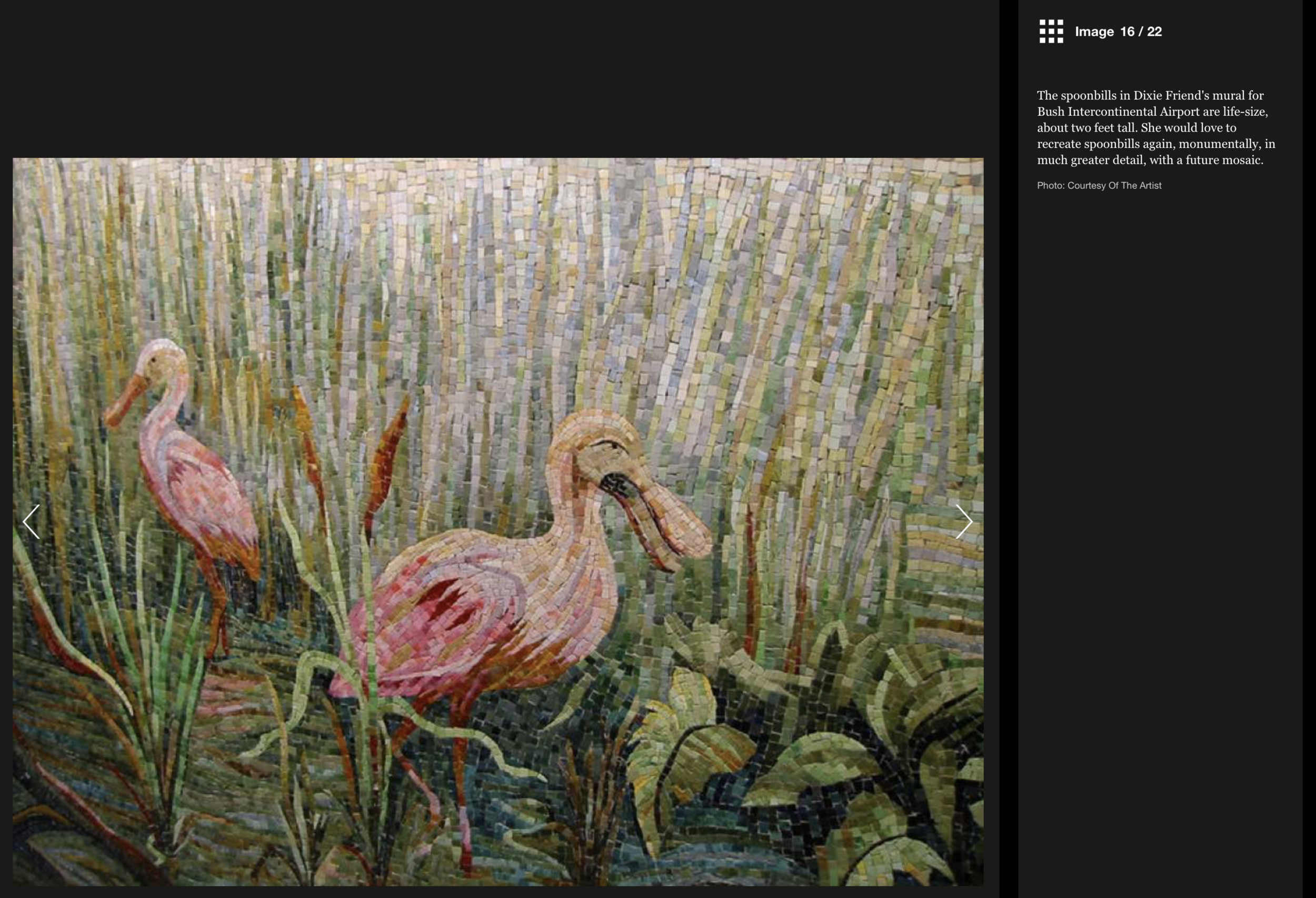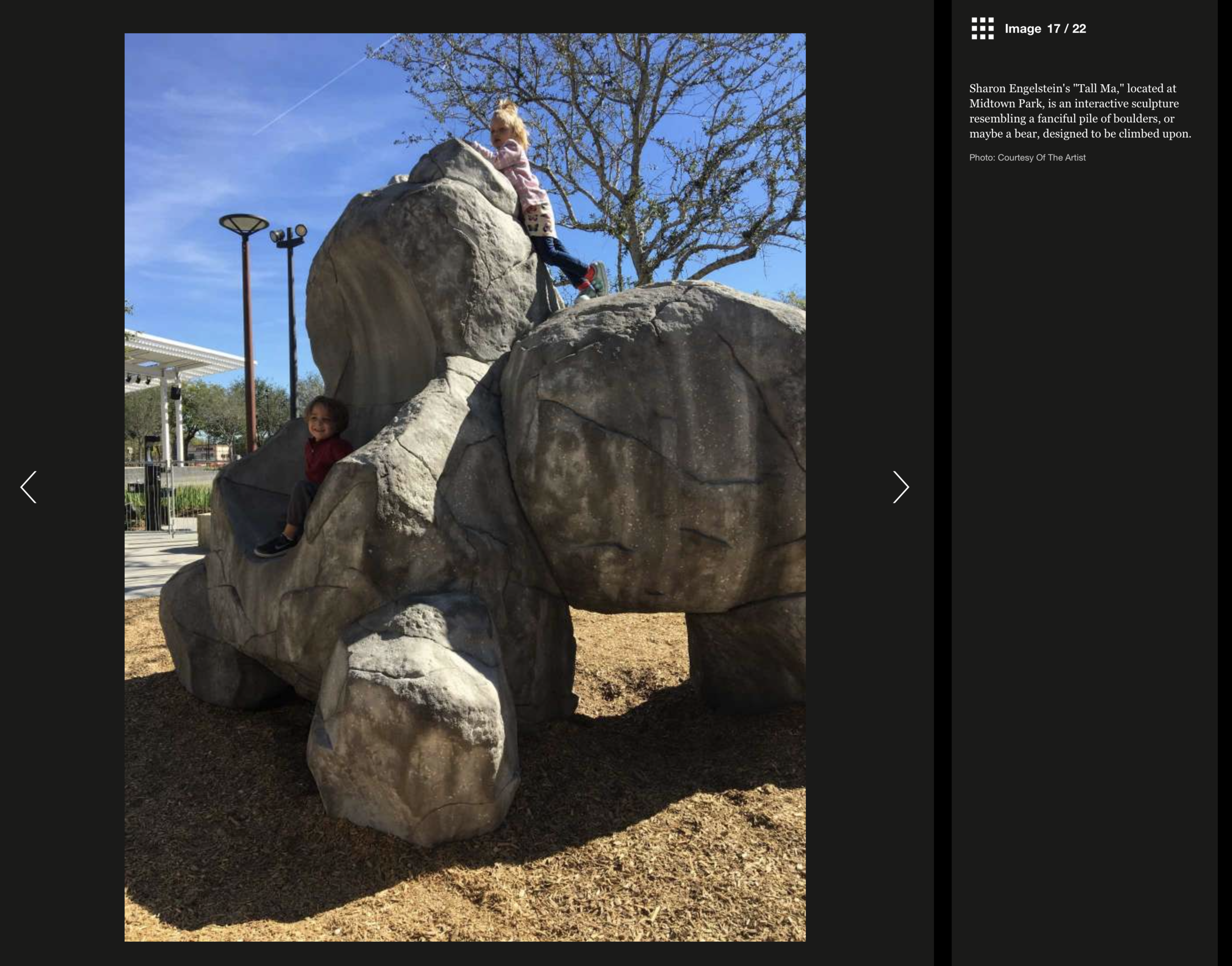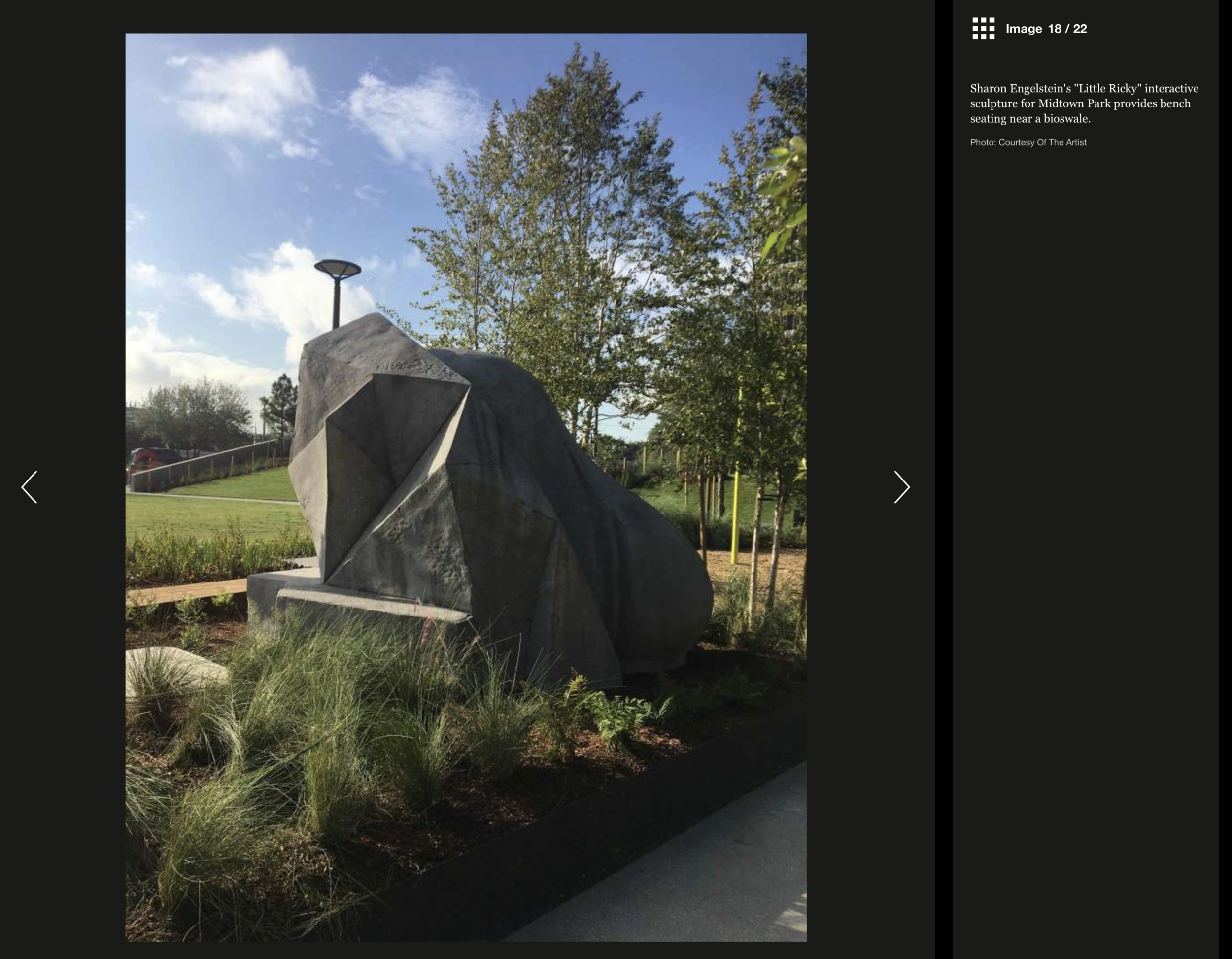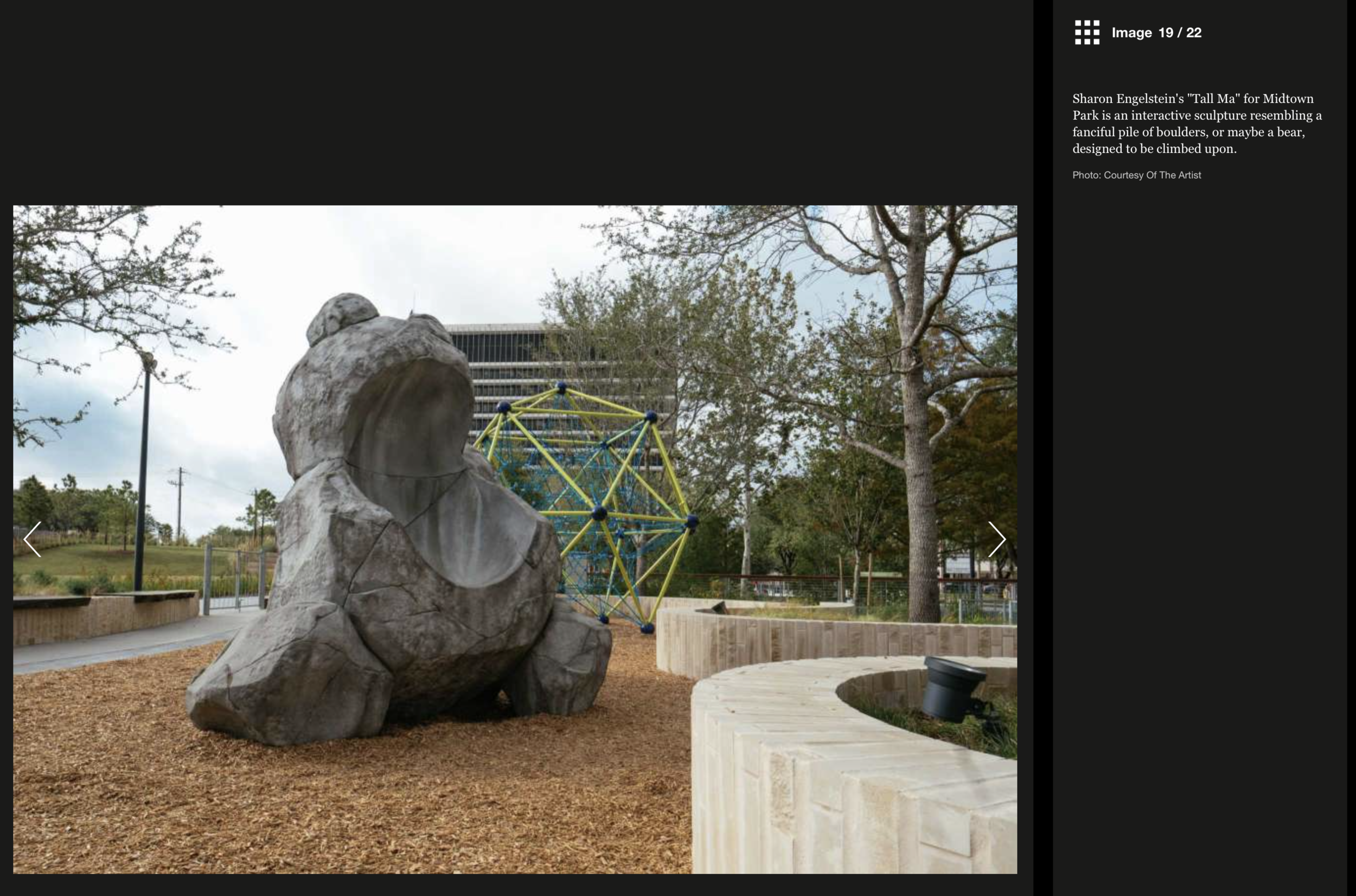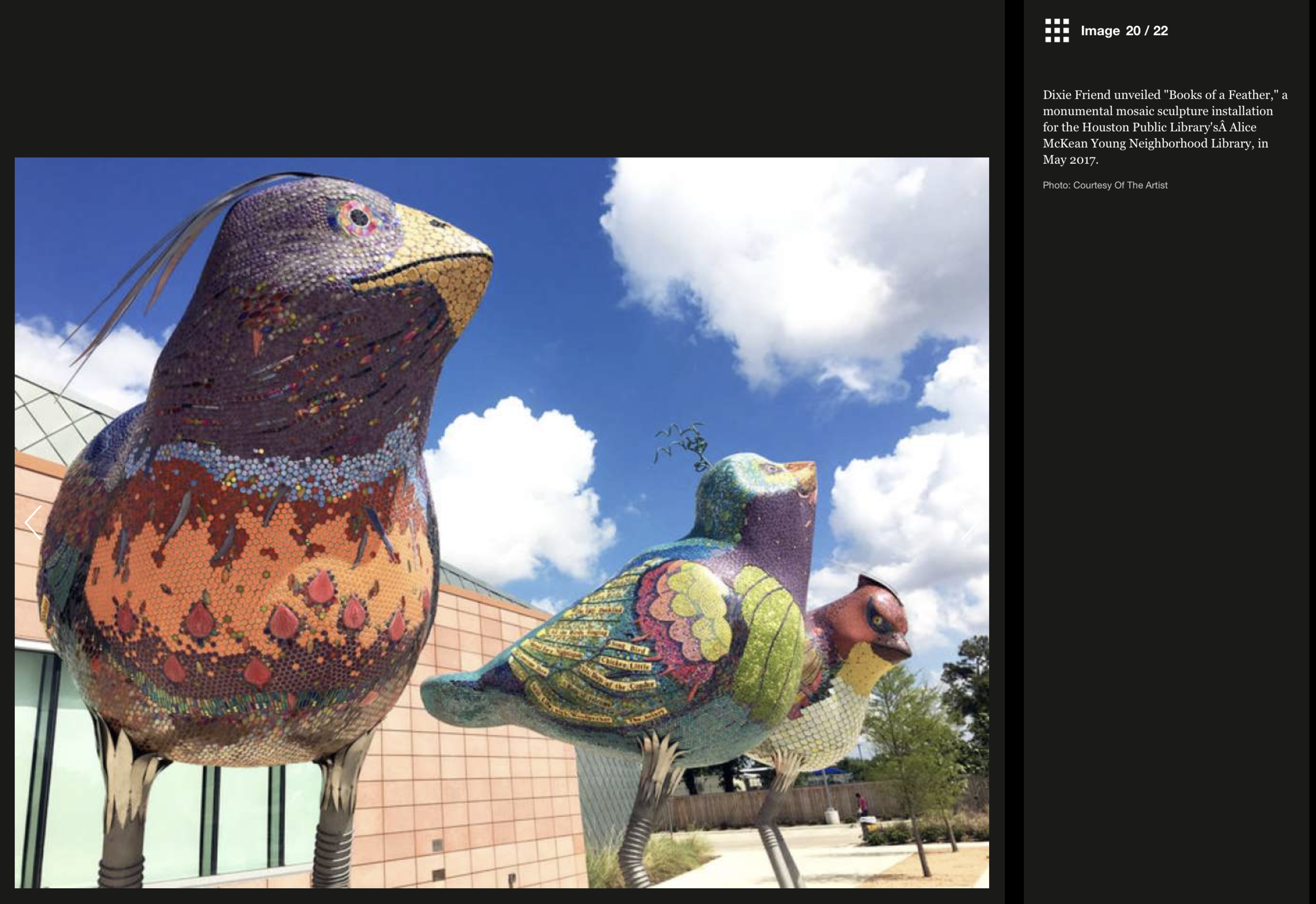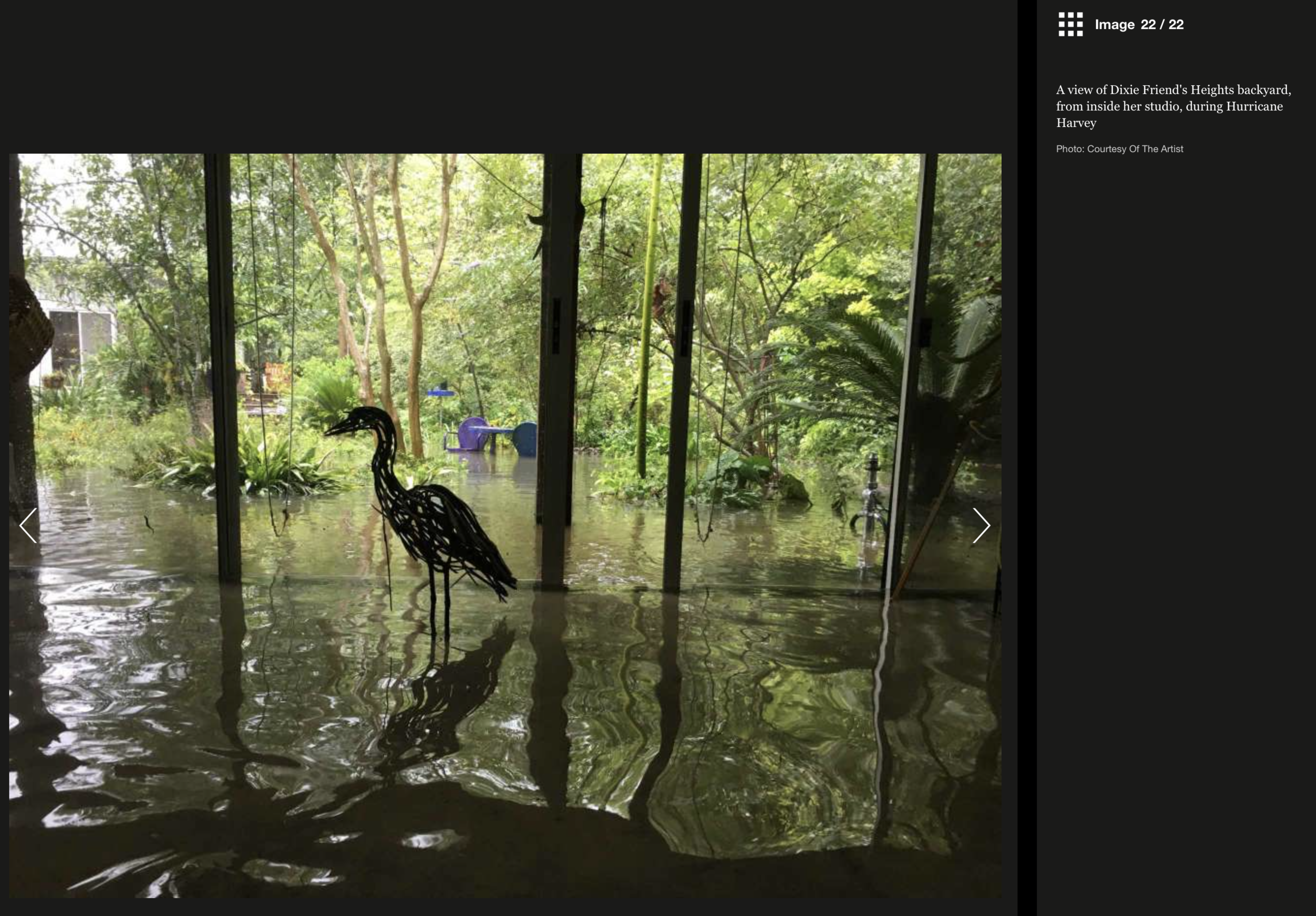Nature steals the show in mosaic masterpiece in Midtown Park
/The Houston Chronicle's Molly Glentzer has written a great article titled, Nature steals the show in mosaic masterpiece in Midtown Park, about my most recently completed project, Wild Wonderland. This 12' x 63' mosaic mural is part of the new Midtown Park here in Houston, located at 2811 Travis. The mural features a plethora plants, flowers, insects and other tiny creatures found in nature. Read the full article and see images taken by Elizabeth Conley below!
Mosaic muralist Dixie Friend has spent decades opening peoples' eyes to the intricacies of nature.
Her backyard along White Oak Bayou in the Heights hums with native creatures seeking food and shelter. Bees pull nectar from lavender-hued spikes of monarda. Pipevine swallowtail butterflies depend upon bulbous pipevine flowers and lay eggs on the heart-shaped leaves. Green anoles expose their red throats, looking for love among the violets. Hognose snakes slither underneath the frogfruit in search of tasty toads.
One can almost hear it all and feel the heat of a June afternoon just after a rain shower in "Wild Wonderland," Friend's latest mosaic wall, which was inspired by photographs from her backyard. The mural captures a glorious microcosm of animal, insect and plant life just 12 inches above the ground, magnified many times. For example, a ladybug that might measure an eighth of an inch long in real life consumes 6 or 8 inches.
The 12-by-63-foot mosaic fills a wall at the southeast corner of Midtown Park, the inviting, new 6-acre greenspace developed by Midtown Houston at 2811 Travis. The wall supports one of the park's berms - a place where visitors are encouraged to look up and all around - while the mural reminds them of all that nature holds closer to their feet.
Visitors will also encounter some of the plants depicted in the mural actually growing in the park.
Landscape architect Steven Spears and a team from his former company, Design Workshop, included a bioswale among the plantings that comes alive when it rains, filling with water from the underground garage that feeds into a cistern.
Come late spring and early summer, monarda, coneflowers, rudbeckia and other native perennials will bloom. Native salvias already are in flower. Spears' design also incorporates critter-welcoming frogfruit, bushy bluestem, inland sea oats, oakleaf hydrangea and native trees such as swamp red maples, bald cypress, river birch and live oaks.
During the park's planning phase five years ago for the redevelopment authority Midtown Houston, Spears and his team spent time sitting at the open site, observing what was happening there. They saw MetroRail trains and traffic pass, and the way daylight created shadows from nearby buildings.
"The thing we didn't see was nature," Spears said, "not a single bird or butterfly."
Surrounded by roads and infrastructure, Midtown has no bayou or drainage ways, they realized. That inspired their urban oasis design, which also celebrates the neighborhood's artful character by incorporating visual art and a performance stage as well as a playground and a dog park.
Along with Friend's mural, the developers commissioned a pair of interactive, concrete-form sculptures by Sharon Engelstein. Her "Little Ricky" doubles as a bench, while her "Tall Ma" structure/mini-climbing wall is made for playground romping.
Engelstein, collaborating with Gunnison, Colo., fabricator ID Sculpture, loved the task of creating engineered structures that are both safety compliant and aesthetically dynamic. She can certainly do color - her bubbly "Armadillidiidae" and "Dillidiidae" pieces at Hermann Park are bright pink. But the unpainted "Little Ricky" and "Tall Ma" look like they might have been carved from boulders on-site.
Spears likes the contrast between Friend's in-your-face color and Engelstein's subtle, almost abstract gray pieces - dualities found in nature, he said. "They're not trying to do the same thing."
Friend took some artistic license with the colors of certain flowers and creatures. She couldn't find tile that perfectly matched monarda, or bee balm, for example. She expects some people will think those flowers are bluebonnets.
But every detail astonishes - including the gilled underside of a mushroom and a magnificent, million-petaled passion flower. Droplets of water and tiny hairs on the leaves and stems of other plants look lifelike, as do the tiny petals of lantana, cypress vine and wild strawberry flowers; and the eyes of the critters.
Friend, who has always gravitated to lush, organic forms, made paintings and drawings earlier in her career that were inspired by Byzantine art. She decided to focus on large-scale public art when she turned 40.
"My work dealt with the sacredness of nature," she said. "I was learning gold leafing to make these icons. Then I got into the study of sacred trees, which got me more into the landscape more seriously."
Byzantine art inevitably led her to Byzantine mosaics, although a more recent masterpiece inspired the lush, landscape-based language that has made Friend one of the nation's busiest muralists: the 1916 "Dream Garden" mural in Philadelphia, made by Louis Comfort Tiffany's studio from a lush Maxfield Parrish painting.
"I was blown away by that," she said. "It's more painterly than the Byzantine mosaics. It's amazing how everything in life kind of fits together."
"Wild Wonderland" is more detailed than Friend's first major commission, Bush Intercontinental Airport's 8-by-73-foot "Houston Bayou," created in 2002.
"Now I understand how to get things to really pop and where to let it go abstract and playful," she said. "The spoonbills at the airport are about 2 feet tall, roughly life-size. Now I'd like to do one 12 feet tall, because they're so prehistoric looking."
She unveiled a trio of more fanciful, 15-foot bird sculptures, "Books of a Feather," last May at Houston Public Library's Alice McKean Young Neighborhood Library.
Each piece begins with photographs, which she combines digitally, prints out and paints before creating a scan that can be printed at wall size and sent to the Montreal workshop Mosaika, where the mural is manufactured. "Wild Wonderland" holds more than 800,000 pieces of hand-cut glass that Friend received in roughly 2-foot-square sections, mounted on gauze. Four assistants helped to install and grout it all.
Her 25-year-old home garden rebounded quickly after Hurricane Harvey and is once again gorgeous, she said. But she will soon demolish her home and studio, which took on 14 inches of water, to rebuild 9 feet higher. The ground level will become storage for glass tiles.
Friend barely has time to garden, much less rebuild a home, with a waiting list for more murals.
She is creating three large murals at Sam Houston State University about the microscopic communication between trees, then has a commission for Lamar University, which wanted a mosaic with lily pads for a new science building.
Friend grew up in Oklahoma on a cattle ranch, totally immersed in a more scrubby landscape. That's really where she learned to look at plants and animals close-up.
"I was drawing yuccas as big as I could when I lived there - the big white, candelabra ones," she said.
But Houston's sexy, semi-tropical environment resonates with her spirit.
"Yeah. I-t's a stark contrast to the desolation of the desert," she said. "But after living where it's so wet, I appreciate the paintings I've done of the desert more."
By Molly Glentzer, The Houston Chronicle

